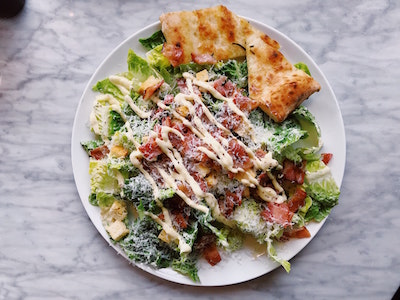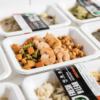SUMMARY
By putting your body in ketosis, a keto diet can help you burn fat and lose weight. It requires you to lower the amount of carbs you eat and increase your intake of fat.
Fresh N’ Lean is the nation’s largest organic meal delivery service. Our tasty, chef-prepared cuisine is always fresh and never frozen, and we offer five convenient meal plans: Protein+, Keto, Paleo, Standard Vegan and Low-Carb Vegan. Choose Fresh N’ Lean for affordable nutrition, delivered to your doorstep.
If you’re one to read about the latest diets online, celebrity gossip, or body transformation stories, then you’ve definitely heard of the keto diet by now.
The keto diet has become the “it” diet for weight loss.
- It uses fat to burn fat and help you drop pounds.
- It has a few variations, so there is some flexibility in structure.
- It promotes greater energy, focus, sleep, and performance.
- It decreases carbs to change how the body uses fuel.
.As a trendy but effective diet that helps you lose weight fast, based on science—and keep it off, too!—everyone is hopping on board in hopes of dropping pounds, getting back energy and stamina, and boosting cognitive health long term. Those are just some of the benefits—yet there happen to be many more.
To learn more about the keto diet, read our Keto 101 guide here.
How does the keto diet work?
The keto diet works because it causes the body to use fat instead of carbs for fuel. By doing it, you burn body fat, where you can lose weight and trim down. Especially in the belly region—something that most guys wish would go away despite their love of a good beer. (Or several beers.)
Once your body is using fat for fuel, it goes into a state called “ketosis.”
And that’s where the magic happens—when you’re in ketosis, your body is producing ketones, which are byproducts that help you lose fat. You want to have high levels of ketones all throughout the day, as this means you’re staying in ketosis and burning as much fat as quickly as possible.
When you’re torching those fat cells, you’ll start to trim down all around, have more sustainable energy, and focus better both at work and during your workouts.
It Works Because You’re Eating Lots of Fat
Yes, fat does not make you fat. It gets rid of it.
In a nutshell, keto means fat, fat, and more fat. So, you’ll want to pile on those healthy fats all day long to produce more ketones in the body and to reach your daily macronutrient requirements.
How is it broken down?
There are three macronutrients:
- Protein
- Fat
- Carbs
You’ll want 75 to 80 percent of daily calories to come from fat for the keto diet, with 15 to 20 percent from protein and about 5 percent from carbs.
Another way to think about this is to consider an average keto meal and portions.
A protein like grilled chicken, fish or grass-fed steak might be the palm of your hand in size, and you might fill your plate half way with green or non-starchy veggies, which could be 1-2 cups total. And you can then add on fats around it and for the last quarter of the plate, such as putting oil or grass-fed butter on the meat or topping meat and fish with avocado slices.
By building meals in this format, you should be able to meet your macronutrients goals for keto!
And You’re Planning the Right Meals
It all comes down to those fats and meal prep.
So, to reach your fat goal, you’re eating clean keto meals such as grass-fed meat and dairy, fortified eggs, avocado, nuts and seeds, fatty fish like salmon, MCTs and other healthy oils like olive, avocado, and coconut, and grass-fed butter and ghee.
This might look like a salad of:
- 2 cups of greens
- 1 cup green veggies, like broccoli, zucchini, or asparagus (pre-cooked in 1 tbsp oil of choice)
- 3 ounces of protein like salmon or grass-fed steak or chicken
- 1 full sliced avocado for goods fats
- 1-2 tbsp of a full fat dressing that’s keto-approved.
You can also go with 2 cups of green lettuce, 1 cup mix of veggies, like tomatoes, mushrooms, zucchini, broccoli, or cauliflower, 3 oz. of protein like albacore tuna or chicken, half an avocado, and a handful of nuts like almonds or walnuts, with some full-fat dressing.
Greens are super, super important, so don’t fear them one bit! (As seen above.)
Green veggies and non-starchy veggies are high in fiber and other good nutrients, and they’re low in carbs. Fiber will keep you fuller longer and regular—something pretty darn important if you’re trying to beat belly bloat.
What you’re not eating is crappy junk food, fast food, and high-carb foods, like legumes, grains, pastas, bread, starchy veggies and fruit, and more.
Since you’re adding in more fats to create more ketones, and you’re reducing the numbers of carbs you’re eating in order to use fat over carbs for that fuel, that puts you right in the sweet spot of ketosis.
And as long as you keep it up as you go about your day, you’ll keep reaping those keto rewards and feel awesome.
And You’re Counting Those Net Carbs, Too!
The biggest way to stay in ketosis? It’s watching those damn carbs!
It all comes down to your carb bank, where you need to stay under about 25 grams of net carbs a day. And to make sure you’re adding up those numbers properly, you’ll need to keep track of the number or estimate to avoid going overboard.
For instance, here are a few foods that aren’t actually keto, although still healthy, because they are higher in carbs than you think!
- Sweet Potato: 27 grams
- Black Beans: 20 grams
- Quinoa: 39 grams
- Grapes: 16 grams
- Mango: 25 grams
- Dried Fruit: 23 grams
- Strawberry Yogurt: up to 41 grams!
Reminder: We calculate net carbs, not total carbs to make up that 25 or so grams of net carbs.
Pay attention, now, as this is where you can make or break the keto diet. “Net carbs” is just subtracting total fiber and total grams of sugar alcohols from total carbs. It’s pretty simple though, as you’re just reading the label and doing basic math.
Here are some examples of how you’ll calculate net carbs:
- Raspberries (7g Net Carbs = 15g Total Carbs – 8g Fiber)
- Watermelon (10.4g Net Carbs = 11g Total Carbs – 0.6g Fiber)
- Pumpkin (7.4g Net Carbs = 8g Total Carbs – 0.6g Fiber)
- Mango (22.4 g Net Carbs = 25g Total Carbs – 2.6g Fiber)
- Lentils (12g Net Carbs = 20g Total Carbs – 8g Fiber)
- Carrots (8.4g Net Carbs = 12g Total Carbs – 3.6g Fiber)
You’re Also Swapping Sugar Alcohols for Sugar
If you see “erythritol,” on a label, you can feel safe eating it.
Sugar alcohols are added sweeteners that are often in baked goods, drinks, and other items that are meant to be sweet and delicious but also pretty low in calories, carbs, and sugar content.
But are sugar alcohols good for you?
Sugar alcoholos aren’t bad for you one bit. In fact, once absorbed by the body, they pass on through without changing blood sugar levels or causing spikes.
Do sugar alcohols count as carbs?
Sugar alcohols don’t count as “carbs” as would other sweeteners like honey or maple syrup.
So, you won’t need to factor them into the total budget. A sugar alcohol like erythritol, plus a few more sweeteners that are natural and don’t spike blood sugar, such as monkfruit, stevia, and allulose, all are seen as being non-caloric and carb-free. So, if you see it on a label, eat on up, as these are keto approved!
Here are 8 of the best keto-friendly sweeteners we’d recommend.
In addition to bulking up on fats and slashing net carbs, it’s also helpful to:
- Drink plenty of fluids (to maintain your electrolyte balance)
- Get enough sleep (to avoid cravings and fatigue)
- Fit in cardio and strength training (to help tone lean muscle, beyond just losing the pounds)
With all of these combined, the keto diet will be your handy aid for your best lifestyle possible!
And while there might be some brief side-effects during transition, you’ll then be able to manage any long-term potential effects by doing keto the right way and enjoy some amazing benefits, like weight loss, more energy, and greater focus.
Keto Diet FAQs
Here are some commonly asked questions about the ketogenic diet.
Is keto a fad diet?
No, it is not, as it does not encourage poor eating habits, such as starvation or calorie restriction, which are often involved in fad diets and cleanses.
Is keto short-term or long-term?
The keto diet is mainly used for short-term weight loss; however, you can sustain it and live a keto lifestyle longer term if you choose, as long as it is working for you. You may want to try different variations of keto to make it easier to manage, if so.
Is keto just low-carb?
No, the keto diet is also high-fat! While you are decreasing carbs in the day, you are also bulking up on fats to create ketones and burn more fat. You cannot achieve ketosis without adding the fats, too.
Is keto hard?
It can be, especially at first, as with any new diet that changes your way of eating. Yet, if you understand the basics, make meals you enjoy, and are seeing benefits, it’ll be a piece of cake!
Keto vs. Paleo: what’s the difference?
The keto diet increases fat intake to burn fat, while the paleo diet focuses on increasing protein intake to make it the bulk of the diet, instead. For the “moderate” macronutrient, it is flipped. Both decrease carbs, but keto cuts carbs lower. Both focus on decreasing sugar.
Keto vs. Atkins: what’s the difference?
Atkins is a program that focuses on eating meals and snacks as part of the Atkins plan, while keto does not have such resources and provides more flexibility. The main difference is that you gradually increase carb count on Atkins as you go through the diet process, where you stay at the same count for keto.




